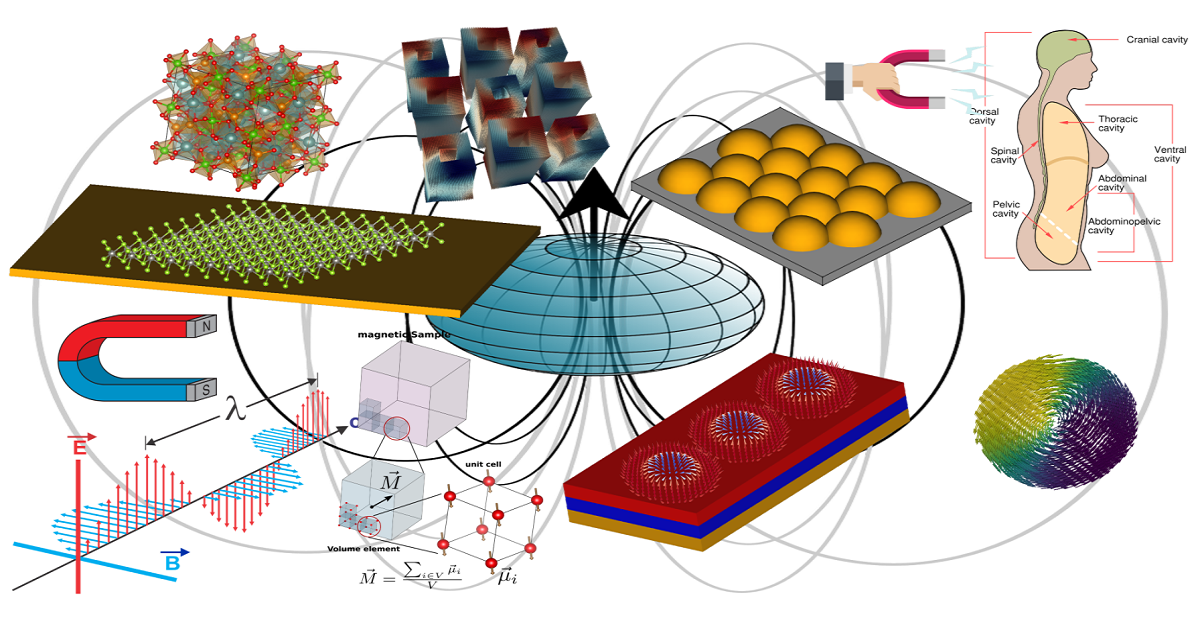Functional Magnetic Materials and Devices: Recent Advances and Applications
A special issue of Applied Sciences (ISSN 2076-3417). This special issue belongs to the section "Materials Science and Engineering".
Deadline for manuscript submissions: closed (20 February 2025) | Viewed by 11244

Special Issue Editors
Interests: magnetism and magnetic properties; nanomaterials; micromagnetic simulation; sol–gel; magnetic oxides; magnetic nanostructures; diluted magnetic semiconductors; ZnO; YIG
Special Issues, Collections and Topics in MDPI journals
Interests: magnetism and magnetic properties; nanomaterials; micromagnetic simulation; sol–gel; magnetic oxides; magnetic nanostructures; diluted magnetic semiconductors; ZnO; YIG
Special Issues, Collections and Topics in MDPI journals
Special Issue Information
Dear Colleagues,
Applied Sciences invites submission of original research articles, review articles, or short communications to this Special Issue entitled “Functional Magnetic Materials and Devices: Recent Advances and Applications.” The Special Issue will encompass all areas of functional magnetic materials, including magnetic materials, diluted magnetic semiconductors, electromagnetic radiation-absorbing magnetic materials, micromagnetic simulation, and ferromagnetic resonance. It will include topics about the properties, characterization, devices, instrumentation, and applications of magnetic materials. Topics such as magnetic materials applied to human and biological science are welcome. Magnetic materials applied to sensors, electronic devices, and other areas are the focus of the present Special Issue, and studies about core@shell nanoparticles, nanometric films, and nanowires are some examples of magnetic systems. We invite you to submit original research articles that belong to any of the following categories:
- Magnetic properties;
- Hard magnetic materials;
- Soft magnetic materials;
- Magnetocaloric materials;
- Magnetic nanoparticles;
- Magnetic materials in data storage;
- Magnetization reversal dynamics;
- Micromagnetic models;
- Smart composite materials;
- Magnetic nanostructures;
- Machine learning for property predictions in materials;
- Magnetic biosensors.
Dr. R. Raudel Peña-Garcia
Dr. Yuset Guerra Dávila
Guest Editors
Manuscript Submission Information
Manuscripts should be submitted online at www.mdpi.com by registering and logging in to this website. Once you are registered, click here to go to the submission form. Manuscripts can be submitted until the deadline. All submissions that pass pre-check are peer-reviewed. Accepted papers will be published continuously in the journal (as soon as accepted) and will be listed together on the special issue website. Research articles, review articles as well as short communications are invited. For planned papers, a title and short abstract (about 250 words) can be sent to the Editorial Office for assessment.
Submitted manuscripts should not have been published previously, nor be under consideration for publication elsewhere (except conference proceedings papers). All manuscripts are thoroughly refereed through a single-blind peer-review process. A guide for authors and other relevant information for submission of manuscripts is available on the Instructions for Authors page. Applied Sciences is an international peer-reviewed open access semimonthly journal published by MDPI.
Please visit the Instructions for Authors page before submitting a manuscript. The Article Processing Charge (APC) for publication in this open access journal is 2400 CHF (Swiss Francs). Submitted papers should be well formatted and use good English. Authors may use MDPI's English editing service prior to publication or during author revisions.
Keywords
- functional magnetic materials
- devices
- films
- nanowires
- sensors
- electronic devices
- diluted magnetic semiconductors
Benefits of Publishing in a Special Issue
- Ease of navigation: Grouping papers by topic helps scholars navigate broad scope journals more efficiently.
- Greater discoverability: Special Issues support the reach and impact of scientific research. Articles in Special Issues are more discoverable and cited more frequently.
- Expansion of research network: Special Issues facilitate connections among authors, fostering scientific collaborations.
- External promotion: Articles in Special Issues are often promoted through the journal's social media, increasing their visibility.
- Reprint: MDPI Books provides the opportunity to republish successful Special Issues in book format, both online and in print.
Further information on MDPI's Special Issue policies can be found here.






